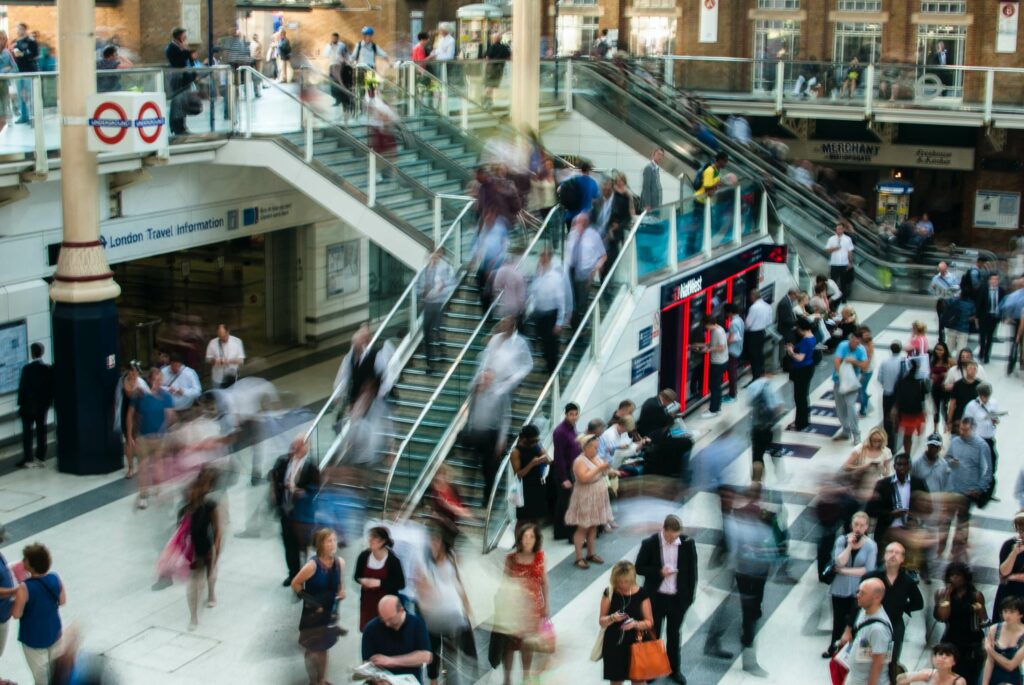The time to be jolly and kind and… frenetic about buying things we do not actually need. All beautifully wrapped in the perfect consumerism trap of Black Friday.
Even though it all started in the USA, the rest of the world rapidly caught up. In 2019, consumers in the UK spent a staggering amount of 8.5 billion GBP during Black Friday and Cyber Monday. Yes, that is right, billions. Yearly, the so-called holiday pushes people all over the world to spend more and more. As online shopping makes everything easier, the number of online purchases has been going up each year. The US has seen a 280% increase in online sales during Black Friday between 2013 and 2019, reaching 7.4 billion USD last year.
The term ‘Black Friday’ as we know it started around the 1960s. However, it did not have the positive connotation consumers know today. Philadelphia Police Department used the term for the first time to describe the dreadful traffic jams and crowded sidewalks on the Friday following Thanksgiving Day.
Nowadays, merchandisers buried this negative meaning under the mesmerising promise of unforeseen discounts. But let’s dig a bit deeper into that, shall we?

Black Friday and the false lure of saving money
“Sales are deliberately orchestrated to make people panic that they are at risk of losing out on the promise of happiness unless they act fast” – clinical psychologist Dr Jonathan Pointer, as quoted by Lauren Sharkey in ‘The Problem With Black Friday, According To Environmental Experts’, Bustle, 2019
You have probably seen various Black Friday discounts and you thought they sounded too good to be true. That is because they probably are. Retailers lure consumers with flashy sales, but the number of available items is actually so low that only a few people get to the prize. However, pseudo-offers fill the stores, both physical and online, and customers will easily fall for them under the spell of discounts and limited time.
But it does not stop here. Manufacturers introduce many products as limited-editions, using cheaper materials and ensuring overall lower quality. These products are called derivatives. As they did not exist before, retailers can claim a high original price followed by a too-good-to-miss discount. Derivatives generally have a different model number than the original and assessing their reliability can be very challenging due to a lack of information and of online reviews.
Black Friday can also be an oasis for online scams. Consumers should be extra careful not to let the holiday ‘magic’ lure them into phishing schemes and credit card skimming.
The environmental impact of Black Friday and consumerism
It would be unfair to say that all Black Friday offers are evil lies in order to take advantage of poor consumers. Some can be a great occasion to save money if you are in the right place at the right time. However, we cannot ignore the massive environmental impact of this event.
“For those who don’t have much purchasing power, and even for those who have it, being able to buy something they truly need at a discounted price is obviously a benefit. The problem doesn’t necessarily lie here – rather, it’s the mass consumption of unnecessary and/or unethical goods that need to be addressed” – André Gonçalves, ‘From Black Friday To A Green & Meaningful Friday’, YouMatter, 2019
The case of electronics
We already know that overconsumption is bad for the environment. It puts precious resources into things that will eventually end up in a landfill or stranded in a dark drawer. Let’s take the example of one of our absolute favourite purchases – electronics.
Our technology advances at such a fast pace that striving to keep up with the newest gadgets means buying a new phone, laptop and camera every year. As a result, we produced over 44 million tons of e-waste in 2016. That is the physical equivalent of 4500 Eiffel towers! As expected, the number increases with each year. In 2019, the amount of e-waste reached 54 million tons. Moreover, we managed to collect and recycle only 20% of this.
These products not only trap useful and depleting materials like indium, silver and gold, but they also have a toxic effect on our environment. Our electronics are a nest for toxic metals including lead, nickel, beryllium, mercury and cadmium. If used electronics end up in landfills, these metals can contaminate the soil and groundwater, from where they can easily make their way into our food chain.
Most of the materials in our electronics come from mining. This can have disastrous effects on the environment, leading to water pollution, erosion, deforestation, and harm to the animals and plants in the area. They can also be a source of severe conflicts like the one in the Democratic Republic of Congo and human losses.
Lastly, the amounts of energy and water used for these products is staggering. For example, between 2007 and 2016, roughly 968 TWh have been used to manufacture smartphones, which is close to the amount of electricity India uses in one year. The majority of these aspects are taking a drastic toll on climate change, pollution and human well-being.
Unravelling the other layers of Black Friday consumerism spree
Apart from the resources that go into producing the items in our latest Black Friday shopping binge, let’s not forget that most of them are usually shipped across the Globe. This adds to our order’s footprint. Moreover, retailers need to package the products, thus contributing to our CO2 emissions from producing plastics, polluting our oceans, and adding to our landfills.
Lastly, we should not overlook the human aspect of overconsumption. For example, we know fast fashion is filled with toxic chemicals and has a massive carbon footprint (fashion industry is responsible for 10% of all man-made carbon emissions and is the second-largest consumer of water). Moreover, fast fashion has an immense impact on workers in the manufacturing process. They are exposed to harmful chemicals, abused, and underpaid.

It has been a nice illusion, but it needs to stop
Over the years, products have become more and more affordable, variate, and accessible. However, buying items, no matter how small, just because they are cheap contributes to climate change, feeds our mountains of waste, and depletes our planet of its resources.
Moreover, if you want to focus more on the economic aspect, just remember that buying something you do not actually need is still a waste, be it an 80% less expensive waste. It is understandable if we feel better after buying a new thing. It is just what our twisted media culture taught us – we do not want the newest smartphone model, we need it.
Implement circular economy
What if instead of that we make the circular economy the new hip thing? What if instead of going on a shopping spree to cure a bad day we focus on our mental well-being or do something good for others? We still need things, but at some point, we have to stop and think about our actions.
If my laptop is getting slow, I could just repair it or look for a better second-hand model. If I want that new cool phone, does it make sense for my already perfectly functioning gadget to spend the following years in my drawer? Also, what about all those clothes and shoes that I only wore a few times and I feel like replacing with some new items?
Before making a new purchase, we all need to stop and ask ourselves if we actually need all these things and the consequences of buying them. The amount consumers will spend during Black Friday 2020 is expected to increase by 20% compared to last year. Let’s not be just another one of the billions of people contributing to this bitter forecast and say no to worthless purchases!







